From ranching to farming, and from oil to high-tech, the Texas economy has it all. Our Working Texas documentary takes you on a fascinating historic tour of Texas’ major industries of the nineteenth century up to today’s high-tech businesses. Spend some time with real Texas farmers, ranchers, lumbermen, and roughnecks and hear their first-hand stories about what it is like to work in these well-known Lone Star industries.
This documentary provides historic overviews of each of these industries, and then takes you outside into the fields and the forests, and out onto the rangeland and the oil derricks, to get an authentic look at the history of Working Texas. The script for Working Texas was written by Dr. Jesús F. de la Teja, History Department Chair at Texas State University, and the documentary was filmed, edited, narrated, directed, and produced by Dr. Glen Sample Ely.
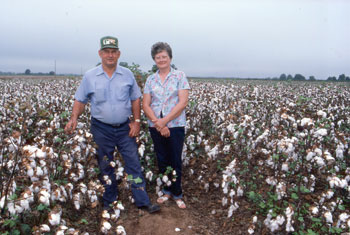
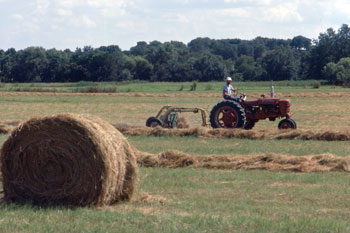
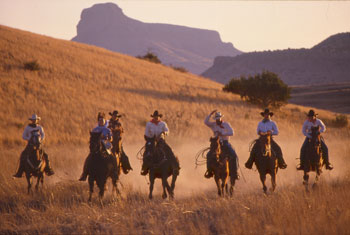
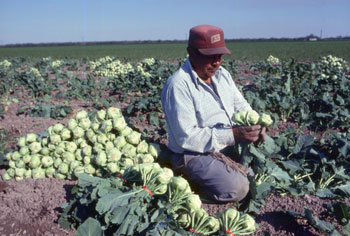
Farming
Cotton is still king of Texas farming. Ever since the Civil War, Texas has been the lead state in this valuable crop. In fact, we produce a third of America’s total crop. African Americans and whites were not the only Texans involved in the cotton industry. In the early twentieth century, tens of thousands of Mexican and Mexican-American migrants found employment as cotton pickers. They made their way from the South Texas fields in June to those of the Plains in September, in what became known as the big swing. Today, Texas is picked mostly by specialized machines run by a single operator. The raw cotton fills large containers that are then driven to processing centers, where the cotton is ginned and baled. The products, cotton fiber and cottonseed are then transported to Texas cities and all over the world for use in the manufacture of textiles, medicines, paints, and other items.
Lumber
After cotton and cattle, the third largest agricultural commodity is the timber or logging industry. Forest products have an annual economic impact of 14.6 billion dollars on the Texas economy. The timber industry is the ninth-largest employer in the state. In East Texas, it is the top-ranked manufacturing employer. About 60% of the 12 million acres of East Texas’ forest are owned by private individuals. The majority of the remaining acreage is owned by large forest products companies like Temple Inland and others. As in farming, the technology and life way in the logging business has changed dramatically over the years. Walter Kyles, Jasper, TX lumberman: “Nowadays, we have equipment so that the guys do not have to cut trees down by hand anymore. We have what we call a ‘shearer,’ this shearer will go out and cut the tree and carry this particular tree and lay it down where the shearer’s driver/operator wants it. Then we have skidder drivers, they come by and pick this tree up and they do not have to get off their skidder, they just bring that tree to the landing, and they don’t even have to get off.”
Cattle/Ranching
The fist cattle were brought to Texas by Mexican settlers in the eighteenth century. Mexican vaqueros developed much of the equipment and many of the techniques that American cowboys employed in the nineteenth century. The semi-wild and range-bred cattle of the eighteenth century became the famous Texas longhorn of the post-Civil War period. In the 1770s, vaqueros from San Antonio and Goliad began driving cattle as far south as Saltillo, Mexico, and east into Louisiana. But the market for Texas beef really took off after the Civil War. An expanding industrial population needed to be fed. Railroads were criss-crossing the Plains, and millions of longhorns occupied the Texas prairies where buffalo had once roamed. Major Texas cattle trails took Texas beef to railheads, from which the cattle could be shipped to slaughterhouses in Chicago. The introduction of barbed wire also played an important role, which allowed for the development of improved pastures, careful breeding of animals, and protection of water resources. Today, cattle and cattle products account for about 40% of Texas agribusiness activity, with over 13.5 million head of cattle in a state that has about 17 million people. Every one of Texas’ 254 counties participates in the cattle industry.
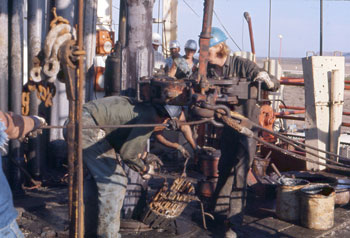
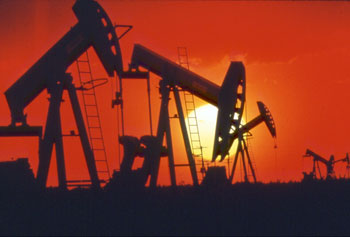

Texas Oil
The history of the Texas oil industry is curious. For one thing, it got a late start. Although Texas Indians made use of oil and naturally occurring asphalts before Europeans arrived, it was not until after the Civil War that an effort was made to drill and use Texas oil. Most experts felt that Texas would never be a great producer. What a shock, then, when the Spindletop Gusher erupted in 1901. In that year, Texas production jumped to over 4 million barrels. And in 1902, the Spindletop Field itself produced over 17 million barrels. Capt. Lucas’ strike at Spindletop proved the experts wrong and brought and oil boom to Texas. Most of the early finds were in East and North Texas, but in 1921 oil was discovered in the Panhandle and Borger became an important oil center. By the 1930s, fields had opened up in South Texas and in the Trans-Pecos. By the 1950s, the potential of the offshore reserves was recognized and drilling began. Of Texas’ 254 counties, only 22 have never produced oil or gas, and about 200 counties still produce oil today. The Texas oil boom transformed the lives of millions of Texans. Jobs in the petroleum industry paid much better than farming or ranching, and young men by the thousands abandoned agriculture for lives in the oilfields. In fact, because of the agricultural background of most of these new workers, they were nicknamed “boll weevils.” Aside from “roughnecks,” as oilfield workers are called, the petroleum industry required men to build pipelines, and build and run refineries.
Watch a sample video clip from our documentary
Working Texas: From Ranchers and Roughnecks to Sodbusters and Spacemen
